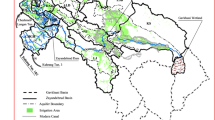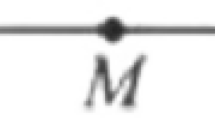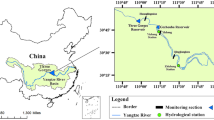Abstract
Sustainability assessment can be used as a basic managerial analysis to evaluate the capability of water resources in supplying associated demands. Alteration of management policies in order to improve the systems’ performance and sustainability can lead to additional costs of system operation. In this study a novel framework is proposed for assessing economic life cycle costs of dams considering system’s performance from sustainability aspect. For convenience, the term Life Cycle Costs (LCC) is used instead of Economic LCC throughout this paper. First, a fuzzy model is proposed to discount and estimate the LCC of dams in different time intervals of their life span including: Construction, Operation and Maintenance (M&O), and Disposal periods. The model is capable of reflecting uncertainties caused by estimation and previsions of different costs because of fuzzy theory application. Then, sustainability of dam performance in operation period is evaluated through triple criteria of Reliability, Reversibility, and Vulnerability (R-R-V). To provide more realistic results, different system performance levels are defined based on the system’s capability to supply demands and the importance of each level is evaluated by weighting them. Furthermore, it is studied how changes in reservoirs operation strategies can reduce the LCC because of higher performance. The proposed methodology is applied to assess the LCC and performance of a dam located at North Eastern part of Iran. The results show that the system’s performance is remarkably enhanced when the operating rules are revised and this change will intangibly reduce the economic benefits.










Similar content being viewed by others
References
Al-Hajj A, Horner MW (1998) Modelling the running cost of buildings. Constr Manag Econ 16(4):459–470
Bromilow FJ, Pawsey MR (1987) Life cycle cost of university buildings. Constr Manag Econ. doi:10.1080/01446193.1987.10462089
Cobas E, Hendrickson C, Lave L, McMichael F (1996) Life cycle analysis of batteries using economic input output Analysis. In: Proceedings of IEEE International Symposium on Electronics and Environment, Texas
Cople DG, Brick ES (2010) A simulation framework for technical systems life cycle cost analysis. Simul Model Pract Theory. doi:10.1016/j.simpat.2009.08.009
Dhillon BS (1981) Life cycle cost: a survey. Microelectron Reliab. doi:10.1016/0026-2714(81)90241-9
Dubois D, Fargier H, Fortin J (2004) A generalized vertex method for computing with fuzzy intervals. 2004. IEEE Int Conf Fuzzy Syst. doi:10.1109/FUZZY.2004.1375793
Duckstein L, Parent E (1994) System engineering of natural resources under changing physical conditions: a framework for reliability and risk. In: Duckstein L, Parent E (eds) Engineering risk in natural resources management. Kluwer Academic Publishers, Netherlands
Durairaj SK, Ong SK, Nee AYC, Tan RBH (2002) Evaluation of life cycle cost analysis methodologies. Corp Environ Strateg. doi:10.1016/S1066-7938(01)00141-5
Fabrycky WJ, Blanchard BS (1991) Life-cycle cost and economic analysis. Prentice Hall, New Jersey
Ghahraman B, Sepaskhah AR (2004) Linear and non-linear optimization models for allocation of a limited water supply. Irrig Drain 53(1):39–54
Gibson RB (2006) Sustainability assessment: basic components of a practical approach. Impact Assess Proj Apprais. doi:10.3152/147154606781765147
Hanafizadeh P, Latif V (2011) Robust net present value. Math Comput Model. doi:10.1016/j.mcm.2011.02.005
Hashimoto T, Stedinger JR, Loucks DP (1982) Reliability, resiliency, and vulnerability criteria for water resource system performance evaluation. Water Resour Res 18(1):14–20
Kishk M, Al-Hajj A (2000) A fuzzy model and algorithm to handle subjectivity in life cycle costing based decision-making. J Financ Manag Prop Constr 5(1–2):93–104
Kjeldsen TR, Rosbjerg D (2001) A framework for assessing the sustainability of a water resources system. In: Schumann AH, Acreman MC, Davis R, et al. (eds) Regional Management of Water Resources. IHAS Publications, Publ. No. 268, 107–114
Klemeš V, Srikanthan R, McMahon TA (1981) Long memory flow models in reservoir analysis: what is their practical value? Water Resour Res 17(3):737–751
Kundzewicz ZW (1999) Flood protection—sustainability issues. Hydrol Sci J. doi:10.1080/02626669909492252
Kundzewicz Z, Chalupka M (1995) Low flows of the River Warta, Poland- risk and uncertainty aspects. IAHS Publications. http://ks360352.kimsufi.com/redbooks/a231/iahs_231_0319.pdf. Accessed 14 May 2013
Kundzewicz Z, & Kindler J (1995). Multiple criteria for evaluation of reliability aspects of water resource systems. IAHS Publications. http://ks360352.kimsufi.com/redbooks/a231/iahs_231_0217.pdf. Accessed 22 December 2013
Laura CS, Vicente DC (2014) Life-cycle cost analysis of floating offshore wind farms. Renew Energy. doi:10.1016/j.renene.2013.12.002
Loucks DP (1997) Quantifying trends in system sustainability. Hydrol Sci J. doi:10.1080/02626669709492051
Love PED, Irani Z, Ghoneim A, Themistocleous M (2006) An exploratory study of indirect ICT costs using the structured case method. Int J Inf Manag. doi:10.1016/j.ijinfomgt.2005.11.001
Makoni ST, Kjeldsen TR, Rosbjerg D (2001) Sustainable reservoir development-a case study from Zimbabwe. In: Schumann AH, Acreman MC, Davis R, et al. (eds) Regional Management of Water Resources. IHAS Publications, Publ. No. 268, 17–24
McLaren RA, Simonovic SP (1999) Evaluating sustainability criteria for water resource decision making: a case study from the Assiniboine delta aquifer region. Can Water Resour J. doi:10.4296/cwrj2402147
Morrison-Saunders A, Pope J (2013) Conceptualising and managing trade-offs in sustainability assessment. Environ Impact Assess Rev. doi:10.1016/j.eiar.2012.06.003
Moy WS, Cohon JL, ReVelle CS (1986) A programming model for analysis of the reliability, resilience, and vulnerability of a water supply reservoir. Water Resour Res 22(4):489–498
Ong HC, Mahlia TMI, Masjuki HH, Honnery D (2012) Life cycle cost and sensitivity analysis of palm biodiesel production. Fuel. doi:10.1016/j.fuel.2012.03.031
Otto B (2000) Payin for dam removel: a guide to select funding sources. American Rivers, Washington DC
Raskin PD, Mansen E, Margolis RM (1996) Water and sustainability global patterns and long-range problems. Nat Resour Forum 20(1):1–15
Ross TJ (2009) Fuzzy logic with engineering applications, 3rd edn. Wiley, New York
Shamir U (1996) Sustainable management of water resources. Proc Int Conf Water Resour Environ Res, Kyoto, Jpn 2:15–29
Slootweg R, Jones M (2011) Resilience thinking improves SEA: discussion paper. Impact Assess Proj Apprais. doi:10.3152/146155111X12959673795886
Sobanjo JO (1999) Facility life-cycle cost analysis based on fuzzy sets theory. In: Proceedings of 8th International Conference on Durability of Building Materials and Components, Vancouver, Canada, pp. 1798–1809
Takeuchi K, Hamlin M, Kundzewicz ZW, Rosbjerg D, Simonovic SP (1998) Sustainable reservoir development and management. IHAS Publications, Wallingford, Publ. No 251
Taylor W (1981) The use of life cycle costing in acquiring physical assets. Long Range Plan 14(6):32–43
Woodward DG (1997) Life cycle costing—theory, information acquisition and application. Int J Proj Manag. doi:10.1016/S0263-7863(96)00089-0
Zhu Y, Tao Y, Rayegan R (2012) A comparison of deterministic and probabilistic life cycle cost analyses of ground source heat pump (GSHP) applications in hot and humid climate. Energy Build. doi:10.1016/j.enbuild.2012.08.039
Acknowledgments
The authors wish to thank Mr. S. Yari due to his ideas for improving this paper.
Author information
Authors and Affiliations
Corresponding author
Rights and permissions
About this article
Cite this article
Vahdat–Aboueshagh, H., Nazif, S. & Shahghasemi, E. Development of an Algorithm for Sustainability Based Assessment of Reservoir Life Cycle Cost Using Fuzzy Theory. Water Resour Manage 28, 5389–5409 (2014). https://doi.org/10.1007/s11269-014-0808-7
Received:
Accepted:
Published:
Issue Date:
DOI: https://doi.org/10.1007/s11269-014-0808-7




